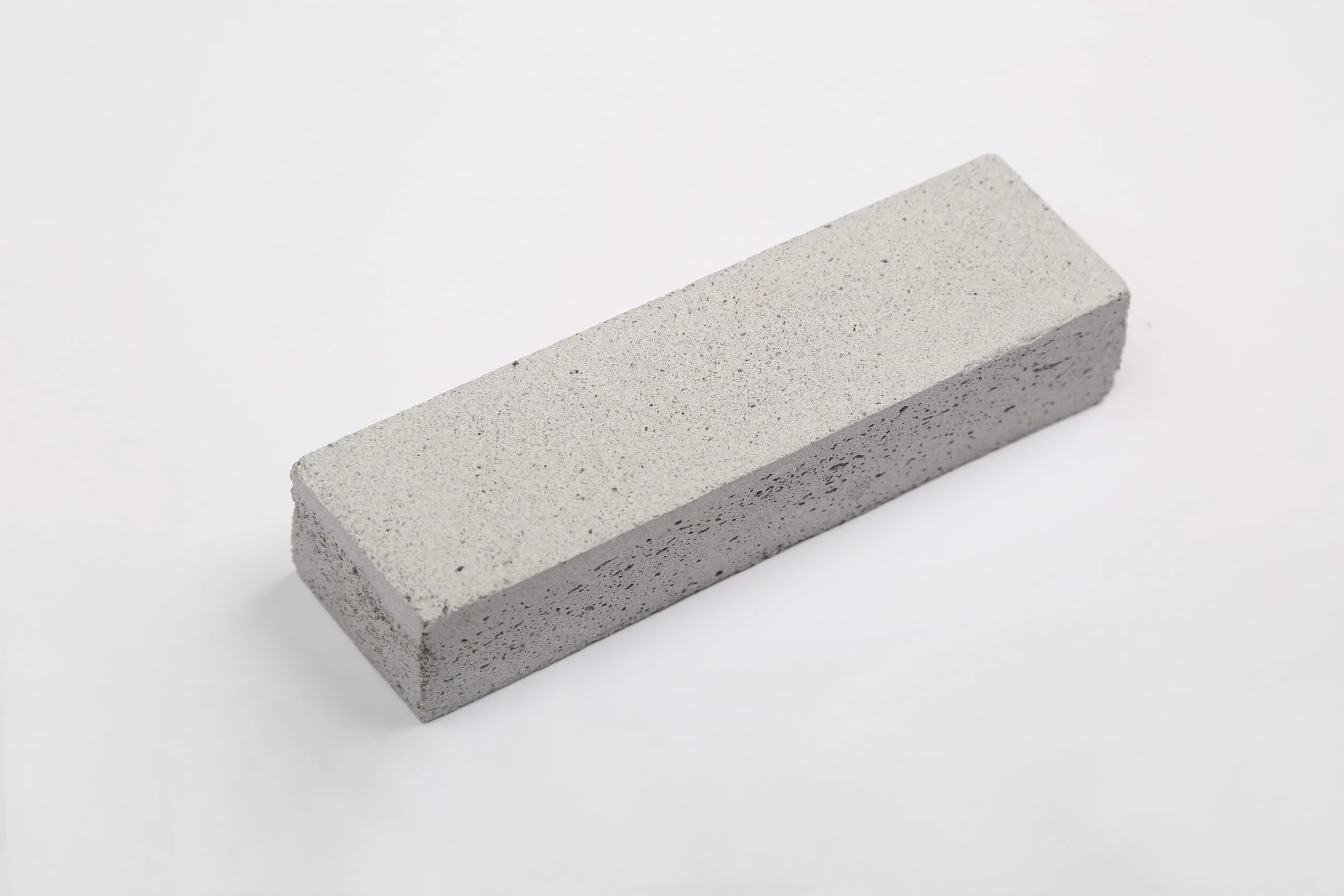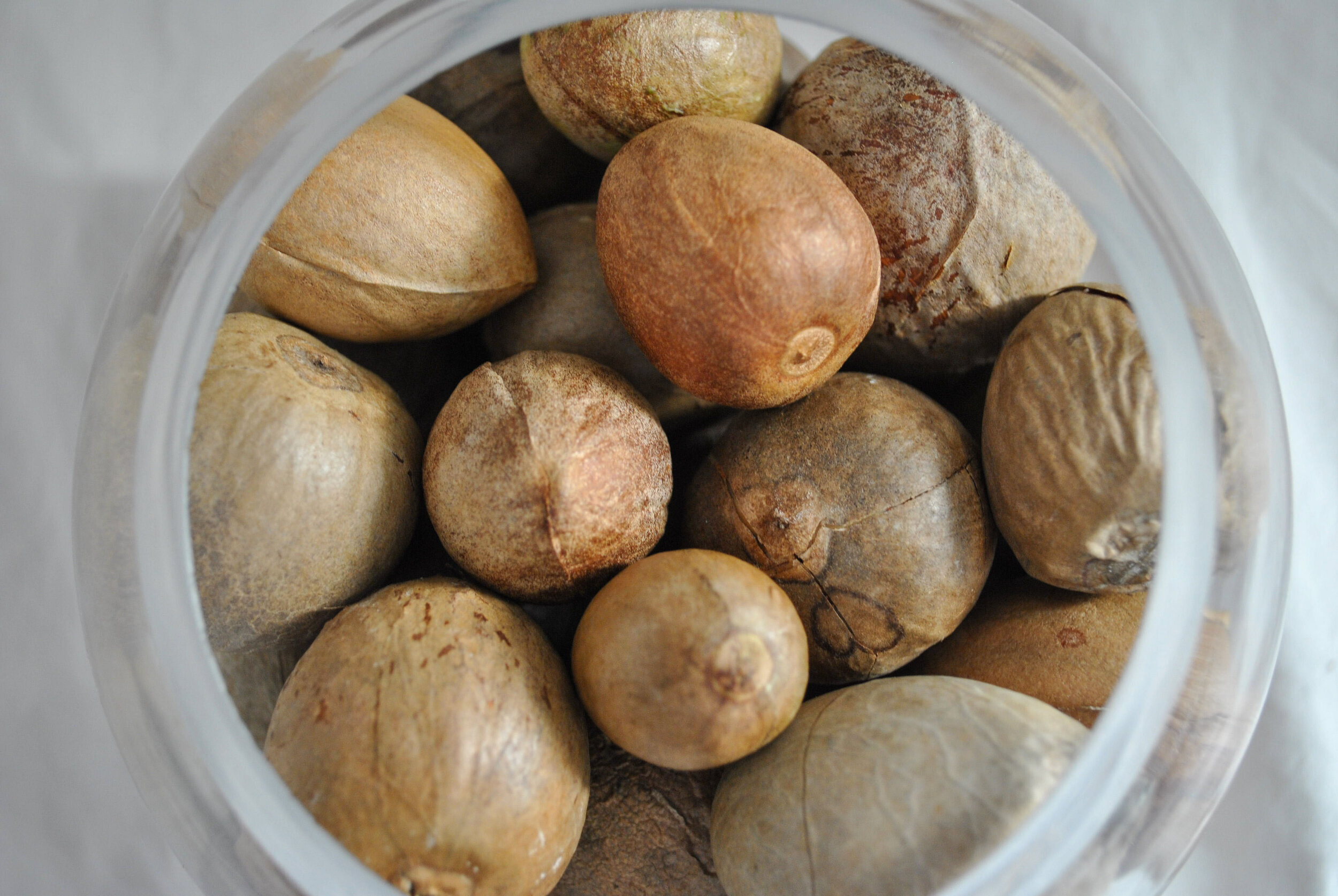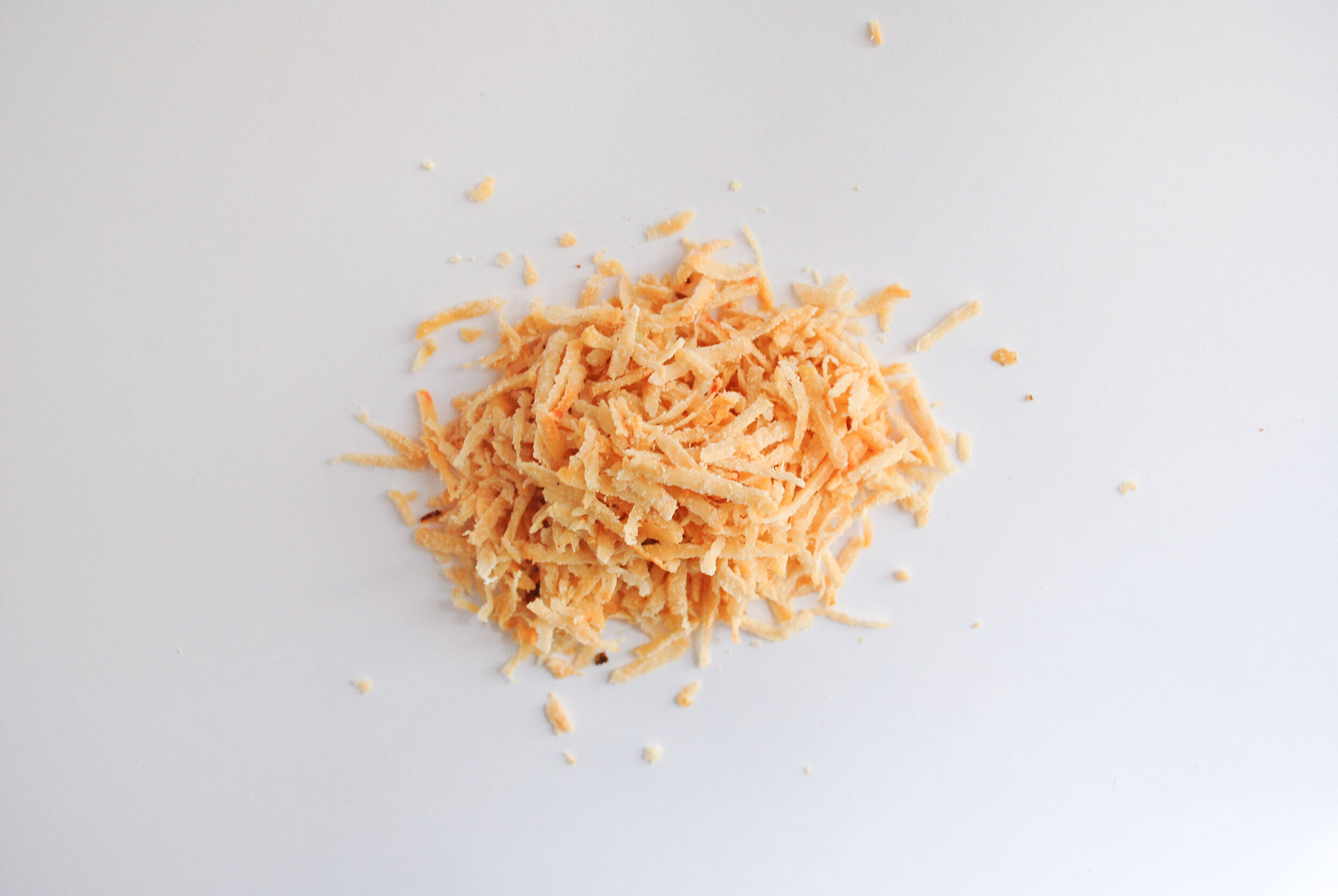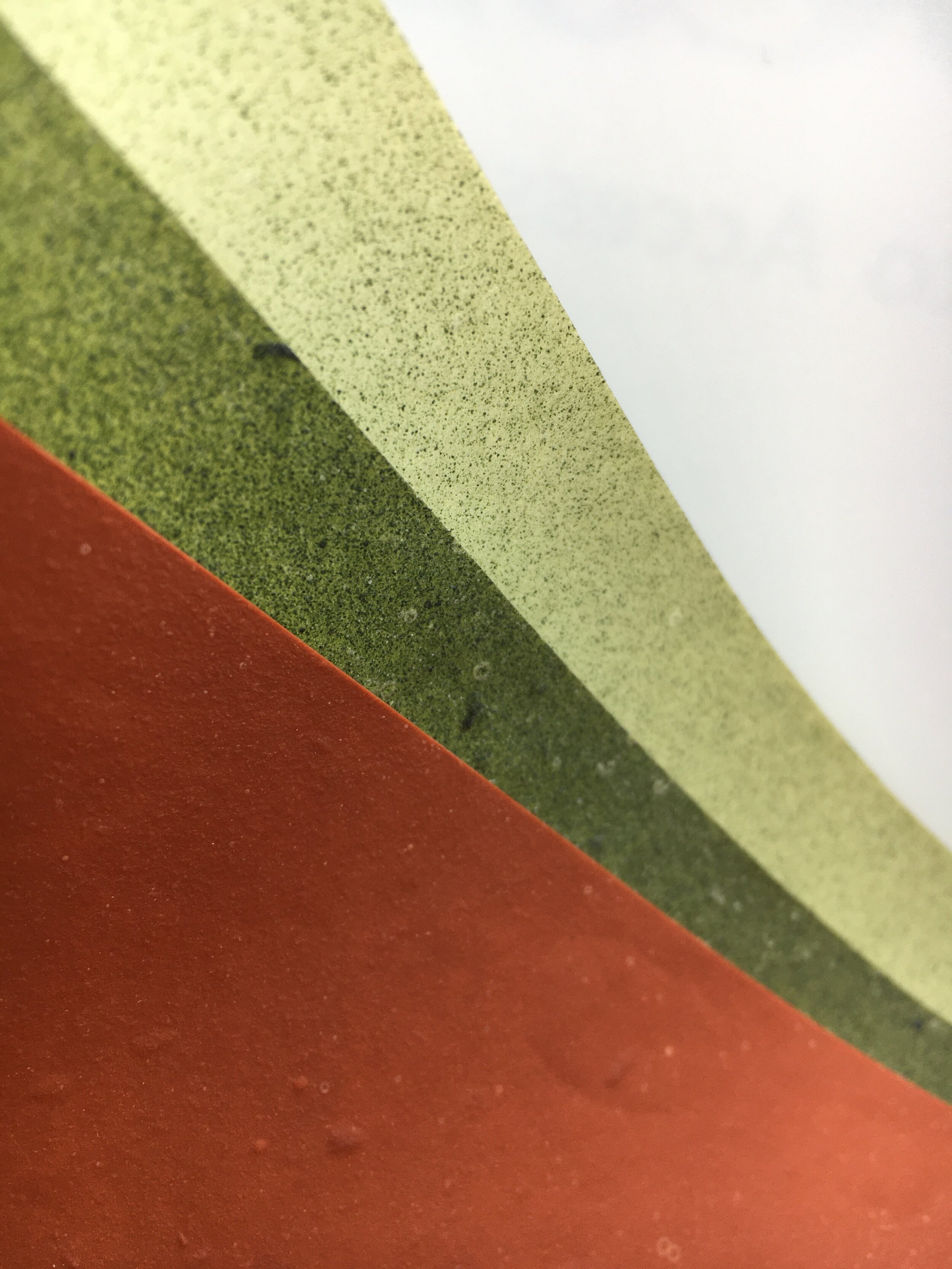Caro Pacheco
Biomaterials and their importance in social and environmental issues
Calcáreo - Emergent Biomatter, algae - mussel based
Design is a complex field divided into several areas of specialism. Apart from product, industrial, and graphics, more designers are currently focusing on the material than ever before. By discovering the potential of matter, material designers can explore, design, educate and communicate what materials are and implement positive socio-economic, political and environmental changes, supporting society to produce and consume materials more responsibly. Consequently, material designers' role is more extensive than creating materials; they are also agents of change.
To find out more about materials research, we spoke with designer Carolina Pacheco.
Caro Pacheco
Born in Colombia and based in Chile, the designer fondly known as Caro's work focuses on researching and developing biomaterials. Guided by the principles and composition of living materials in nature, she believes in the power of design as an influence to rethink cultural perceptions and relationships with materiality. Through open sources and information transfer, she experiments with developing local biomaterials into creative practices.
Caro can see the urgent need to promote materials that positively impact the environment as well as making research and solutions accessible to all. And with this vital vision, she wanted to do this interview in English and Spanish.
How did your passion for exploring materials begin, and how important is researching biomaterials to you?
The truth is, I wouldn't say that my passion is only for the love of materials. I think that since I was very young I have always had the desire to make things that make sense to me. During my 5 years of University, I was always searching to find my way in something I was passionate about in the world of design. It wasn't until my last year, after having gone through textile, graphic and industrial design, that I got to know the world of creative biofabrication. I would say that's where my passion and interest in materials began. Mainly because I realized for the first time how science could mix with art and how designers could create whilst being informed by natural intelligence. By observing and studying, I saw change was more at hand than I thought. This was how a world opened up for me to research, through critical reading, to understand biological phenomena and to apply them in my career in a strategic and thoughtful way. I believe that in this field autonomous research goes hand in hand with communication and collaboration with the beautiful community that is forming around this practice. This is how both aspects converse, theory and practice and thus the transfer of this knowledge as a tool for social and cultural change.
Do you consider yourself a materials designer? For you, what is the materials designer's role? And do the designers play a fundamental part in social and ecological change?
Honestly, I don't like to identify myself only as a materials designer. I think my practice goes far beyond that; on the one hand, yes, I am dedicated to systematizing recipes and transferring them, but all my knowledge is thanks to the base work of others; people and researchers who, like me, believe in the power of collaboration and the open transfer of information. Yes, I feel that I am adopting and systematizing my experimentation process better through experience, but I have also realized that my "integral" education has allowed me to have a vision that is not only limited to what is related to the characterization of a biomaterial itself. But also, the design of its identity, to the design of information associated with it and how to achieve this discursive link between the emerging biomaterial and its use in creative areas. I think it is essential that designers are able to communicate our own processes very well and our reflections on materials, after all, we are largely responsible for the amount of waste associated with the creation of a product. Therefore, it is not only necessary to propose biomaterials but also how we are able to design, who uses them, how they use them and the end of their life cycle.
What are the challenges for designers researching materials? And the frustrations?
I think I can speak more about my experience and the challenges and frustrations I have had along the way. Mainly because my academic education was not focused on material design, but it was a practice in which I was immersing myself in a more autonomous way. I would say that the biggest challenge has been, personally, the constancy and rigor of the register when experimenting and also the management of frustration when things don't work out well. It is a constant conversation I have with the scientists in my team, somehow my creative context has accustomed me to the immediate, to the explosively innovative and ingenious. However, in the biomaterial world I have learned a lot about patience, and how to cope when things do not work as you want over and over again, which is something that in the world of chemistry, for example, is a constant experience. That is why I think the biggest challenge is to always remember the purpose of all this in the long term, the value of investing time and dedication in this practice and that as you build a narrative, everything starts to make sense and everything is worth it.
Do you think we can tell a story through materials? Why is it essential to think about the life of materials before they reach our hands and also how we discard them?
I think it is fundamental that the materials of objects are able to tell their own story. Things have to start to be seen, not only for their function, but also for all that accumulated energy loaded with social and environmental conflicts. We live in a time where it is necessary to question everything, to ask ourselves about the traceability and impact of the things we consume and in my practice, to be aware of the raw materials we use. It seems to me that although this is a wider societal goal, it is important to remember that we go little by little, changing our routines, making these stories visible, and trying to make imperfect and small changes in our collective consciousness. It always starts from somewhere, and the first thing is always to be informed.
1/5 - TRUE MATTER 2020, DUTCH INVERTUALS ACADEMY - Project developed during Dutch Invertuals Academy 2020
By observing local inequality, you use design to combat ecological and social problems as occurred with the project ⅕ ( TRUE MATTER, 2020 - Dutch Invertuals Academy) and Calcáreo (2019). You communicated the issues to a broader audience with the materials you developed. How do you choose your research? Can you explain a few of your processes?
The truth is that I consider the ⅕ project and Calcáreo, to be two very different examples of how biomaterials can be incorporated into creative practices. On one hand, Calcáreo, I see as a case study of emergent biomaterials. That is to say an example of the critical and reflexive methodology around the development of biomaterial, associated with the understanding of biological matter and its application in specific fabrication processes for the democratization of its use. The project started as my undergraduate thesis and was guided by the Biofabrication Laboratory of my University, BIOFAB FADEU and the Citizen Laboratory of Biomaterials in Valdivia, LABVA. Together with them, I was able to tour the key locations where mussel waste was very abundant. They also guided me through the first experimental processes. However, today the project has become more than a simple material characterization, and has adopted new research and development paths. It could be said that it is a project more grounded in a transferable model, since from this biomaterial I plan to continue carrying out workshops, collaborations and informing on its context. Calcáreo has also mutated to include more research related to organisms that mineralize CaCO3, where I have had a lot of interdisciplinary exchange to carry it out. This project has been a very long process of research and development, but I hope that soon the things we are planning can be made public.
On the other hand, project ⅕ has a much more artistic character. It is set in the context of an international design academy, where the aim was to develop a specific project under the theme "True Matter". The process of ideation and creation was much more limited in its development time and sought a very specific purpose; to communicate through the combination of matter and form, a sensitive and specific problem of my country, in a global scenario that to some extent, is part of the model responsible for the exploitation of avocado monoculture in Chile. The choice of subject matter was guided by the situation I was in at the time, we were in quarantine and I wanted to work with a material to which I had immediate access and which would allow me to tell a story. The avocado is a very characteristic fruit of Chile, where it is regularly eaten with breakfast bread or onces. However, it is not even endemic, but was introduced by force and its characteristics of cultivation by private companies has violated the free access to water for the communities surrounding the cultivation areas. Although the circumstances and timing of the project did not allow me to visit the 'sacrifice zones', such as the community of Petorca in the center of the country, I dedicated myself to another type of approach to tell this story. In addition to getting as much information as I could from the media and true data, I focused on working with the material itself, and I literally tried to 'squeeze' as much as I could from the residue of the avocados consumed by my friends and close friends.
Through different approaches I tried to display how the material itself could communicate this shocking contrast experienced in these communities, and how to demonstrate, as the name of the project and the data collected from my research says, that an avocado tree has approximately 5 times more free access to water than a person from the same locality (⅕).
How do you think you connect people and communicate with materials?
The truth is that, along with this biomaterials movement, something very nice is happening, which is a growing interest in the desire to connect, to learn from each other and to collaborate. I imagine that it is linked to the fact that the practice seeks to democratize this knowledge and that there is a kind of new profession associated with working with biomaterials. The nice thing is how these roles begin to emerge within the community itself. For example, there are people who are more interested in research and material experimentation, others who take on a role as suppliers, others who are active in disseminating and educating people on the processes and practices, and finally those who apply it as a means of creative expression. In this way, each one is acquiring a form and the tools of communication and transfer, where the common goal is making these processes transparent, and I believe that this is where the value of all this lies. How we can manage to make the intrinsic language of the material visible, supported by our own resources of communication and creation of identity.
We are currently witnessing more designers exploring alternative biomaterials and natural byproducts to develop new sustainable and circular processes. Are you optimistic about this? Do you think designers still have to work closer with various sectors and agents, such as government, businesses, schools, and citizens, for fundamental change?
Yessss, I love it and I'm very optimistic about it. However, I am more enthusiastic that this is developing on a scale more grounded in craft than in industrial processes. Mainly because I would like this material revolution to be accompanied by a critical reflection, and to be able to look at the origin of matter horizontally without adopting an anthropocentric role in this regard. And unfortunately, today I do not see the big industries with a real concern that is not behind an economic interest, so I remain faithful that for now, this is local development and on a controlled scale with the times and processes of nature. On the other hand, I do believe that government institutions, academia, small businesses and citizens in general are the next step for this to really generate a positive impact, mainly in education linked to this knowledge.
Lugae - biofilm material made from red macroalgae derivatives















